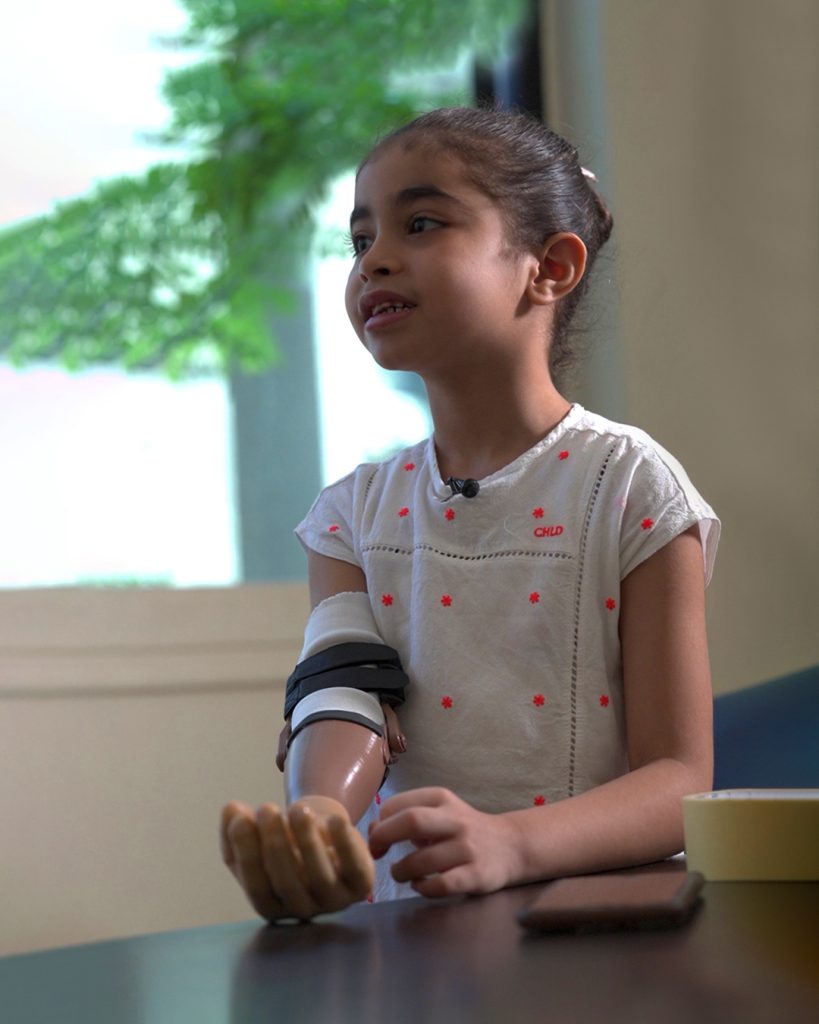Contributions can be made through this fundraising link for those interested in supporting Hand-in-Hand’s efforts.
Florida-based Slice Engineering has honored the non-profit organization Hand-in-Hand for its exceptional work in providing free 3D printed prostheses to individuals in need, particularly children.
Mohamed Hatab founded Hand-in-Hand in Egypt, drawing inspiration from his own battle with childhood cancer. Motivated by a strong desire to help others, Hatab established the organization to improve the lives of its recipients. Hand-in-Hand leverages 3D printing to produce prosthetic limbs, aiming to significantly enhance the quality of life for those in need.
“Hand-in-Hand exemplifies the significant, positive impact that our industry can have on the lives of people around the world,” said Dan Barousse, CEO of Slice Engineering. “It’s heartening to see these important humanitarian goals fulfilled in such a meaningful way.”

Slice Engineering aids the medical sector
According to the company, the technology provided by Slice Engineering has significantly enhanced Hand-in-Hand’s productivity, increasing its 3D printing capabilities more than five-fold. By supplying essential components, Slice Engineering enables the efficient and reliable production of prosthetics, which are crucial for patients assisted by Hand-in-Hand.
Maritime non-profit Island Missions Support used Slice Engineering’s Copperhead Hotend to produce more reliable 3D printed prosthetics in Guatemala. Utilizing Prusa i3 MK3S+ and Raise3D E2 printers, the team overcame PETG warping issues caused by the local climate.
This upgrade reduced print time and waste, enabling the production of durable prosthetics for amputees. Working from a sailboat, the organization expanded operations, producing 28 prosthetics in five months, and planned to assist more amputees in Guatemala and beyond.
Aside from medical efforts, Slice Engineering is known for a comprehensive selection of aftermarket parts and upgrades for 3D printers. This includes filaments, extruders, spare parts, and a prominent line of high-performance hotends. Within its hotend category, two primary choices stand out: the Mosquito Hotend and the Copperhead.
Both hotends adhere to the “RepRap-style” nozzle format (12.5mm length, 7mm thread length). However, the key differentiation lies in their ability to handle elevated temperatures. The Mosquito boasts a maximum operating temperature of 500°C, while the Copperhead offers a still-impressive 450°C. This capability is attributed to Slice Engineering’s unique Bimetallic Heat Break technology, which is designed to address common printing issues such as nozzle clogging, heat creep, and filament jamming, which can lead to failed prints.
Moreover, Slice Engineering prioritizes collaboration and seeks to continuously improve solutions for the 3D printing community. The company actively partners with other businesses to develop innovative approaches to common challenges faced in 3D printing.
3D printing reimagines prosthetics
The future of 3D printed prosthetics looks promising with ongoing developments in materials science and printing technologies. Research into using bio-compatible materials and integrating electronic components could lead to more advanced prosthetic limbs that closely mimic natural movement and sensation.
Overall, 3D printing has made prosthetics more accessible, customizable, and affordable, significantly improving the quality of life for many amputees around the world. One notable example includes that of UK-based robotics company Open Bionics introducing its 3D printed Hero Gauntlet, tailored for hand amputees like 50-year-old Londoner Suleman Chohan. Utilizing 3D scanning and AM, the Gauntlet aids in restoring hand functionality through customizable features and wrist-controlled finger movements.
Chohan, whose hand was partially amputated 30 years ago, praises the Gauntlet for enabling activities such as phone use, mountain biking, and VR gaming. Open Bionics collaboratively developed and tested the Gauntlet with partial hand amputees, aiming for intuitive operation and enhancing users’ daily lives, with a commercial launch expected soon.
Elsewhere, the non-profit organization 3D Sierra Leone received a nomination from the World Health Organization (WHO) for its efforts in using 3D printing technology to create prosthetics for amputees in the West African nation. Meanwhile, scientists at the University of Bristol developed an artificial fingertip that enables amputees to experience tactile sensations through their prosthetic limbs.
Join the Expert Committee for the 2024 3D Printing Industry Awards to help select the winners!
What 3D printing trends do the industry leaders anticipate this year?
What does the Future of 3D printing hold for the next 10 years?
To stay up to date with the latest 3D printing news, don’t forget to subscribe to the 3D Printing Industry newsletter or follow us on Twitter, or like our page on Facebook.
While you’re here, why not subscribe to our Youtube channel? Featuring discussion, debriefs, video shorts, and webinar replays.
Featured image shows Hand-in-Hand’s prosthetic arms aiding a boy in performing daily tasks. Photo via Slice Engineering.



